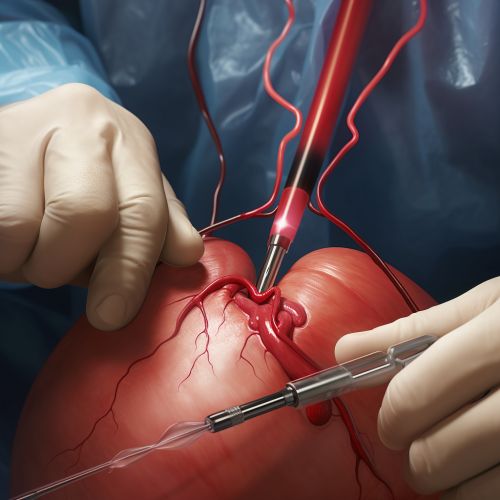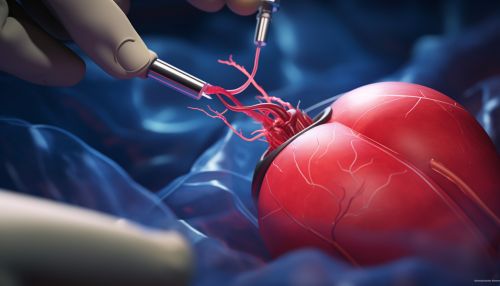Angioplasty
Overview
Angioplasty, also known as percutaneous transluminal angioplasty (PTA) or balloon angioplasty, is a minimally invasive, endovascular procedure to widen narrowed or obstructed arteries or veins, typically to treat arterial atherosclerosis. It involves the insertion of a balloon catheter into the narrowed vessel, which is then inflated to dilate the vessel, improve blood flow, and relieve symptoms associated with the blockage.


History
The concept of angioplasty was first introduced by Charles Dotter in 1964. His initial work was further developed by Andreas Gruentzig, who performed the first successful coronary angioplasty on a human in 1977. Since then, the procedure has evolved significantly, with the introduction of drug-eluting stents and other advancements improving its efficacy and safety.
Procedure
The angioplasty procedure begins with the insertion of a sheath into the femoral artery or radial artery. A guidewire is then passed through the sheath and guided to the site of the blockage under fluoroscopic guidance. A balloon catheter is then advanced over the guidewire and positioned at the site of the blockage. The balloon is then inflated, compressing the plaque against the arterial wall and dilating the vessel. Following this, a stent may be placed to keep the artery open.
Types of Angioplasty
There are several types of angioplasty procedures, including balloon angioplasty, laser angioplasty, and atherectomy. Each type has its own advantages and limitations, and the choice of procedure depends on the patient's specific condition and the location and characteristics of the blockage.
Risks and Complications
While angioplasty is generally safe, it is not without risks. Potential complications include bleeding at the puncture site, damage to the blood vessel, heart attack, stroke, and kidney damage. The risk of complications can be minimized through careful patient selection, use of appropriate technique, and post-procedure care.
Post-Procedure Care and Recovery
Following the procedure, patients are typically monitored for several hours to ensure there are no immediate complications. Recovery time varies depending on the individual patient and the specific procedure performed. Patients are usually advised to avoid strenuous activity for a period of time and may be prescribed medication to prevent blood clots.
Future Directions
The field of angioplasty continues to evolve, with ongoing research focused on improving the safety and efficacy of the procedure. This includes the development of new devices and techniques, as well as research into the underlying mechanisms of restenosis and strategies to prevent it.
